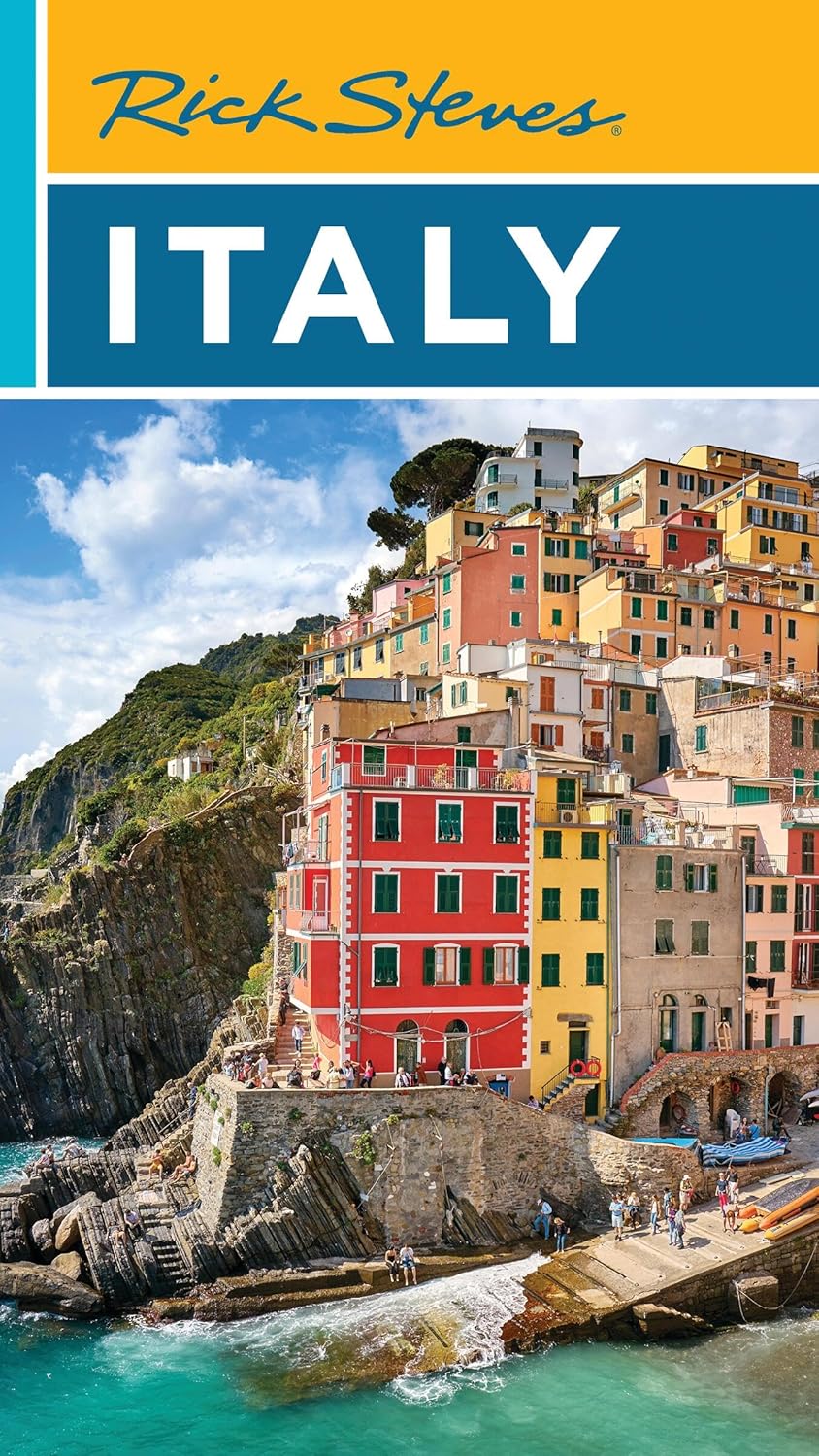Vinci In Tuscany Italy
Vinci in Tuscany, Italy.
Nestled in the rolling hills of Tuscany, about 30 kilometers west of Florence, lies the charming town of Vinci – a place that captures hearts with its medieval streets and Renaissance legacy. This picturesque hilltop commune, home to fewer than 15,000 residents, offers visitors an authentic Tuscan experience away from the bustling crowds of larger cities.
What makes Vinci truly special isn't just its stunning countryside views or well-preserved architecture, but its claim to fame as the birthplace of one of history's greatest minds: Leonardo da Vinci.
Whether you're an art enthusiast, history buff, or simply someone seeking the tranquil beauty of rural Tuscany, Vinci provides the perfect blend of culture, nature, and Italian charm.
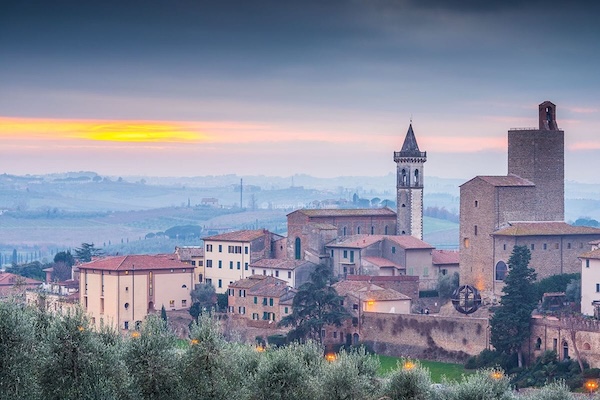 Vinci in Tuscany
Vinci in Tuscany
Vinci in Tuscany Italy
Getting to Vinci is easier than you might expect, with several transportation options available depending on your starting point.
If you're flying into Italy, Florence's Amerigo Vespucci Airport is your closest gateway, just 45 minutes away by car. From Florence city center, you can rent a car and enjoy a scenic 45-minute drive through the Tuscan countryside, following the SP13 and then the SP15 roads.
For those preferring public transportation, take a train from Florence to Empoli (about 30 minutes), then catch the local bus line that runs regularly to Vinci – the entire journey takes roughly 90 minutes. Many visitors also choose to join organized day trips from Florence, which include transportation and often combine Vinci with other nearby attractions.
The town sits majestically at 97 meters above sea level in the Province of Florence, offering breathtaking panoramic views of the Arno Valley and the Montalbano hills.
Vinci's strategic hilltop position has made it an important settlement since ancient times, with its medieval walls and towers still visible today. The surrounding landscape is quintessentially Tuscan – olive groves cascade down gentle slopes, vineyards stretch toward distant horizons, and cypress trees punctuate the rolling countryside like exclamation marks against the sky.
This elevated location not only provides stunning vistas but also creates the perfect microclimate for the region's famous wine production and olive cultivation.
Your first stop should undoubtedly be the Museo Leonardiano, housed in the imposing Castello dei Conti Guidi that dominates the town's skyline. This fascinating museum showcases the genius of Leonardo da Vinci through interactive exhibits, detailed models of his inventions, and reproductions of his most famous works.
The museum spans two locations – the castle itself and the nearby Palazzina Uzielli – offering visitors a comprehensive journey through Leonardo's multifaceted career as an inventor, artist, scientist, and engineer.
You'll be amazed by the working models of his flying machines, war devices, and hydraulic systems, all meticulously crafted based on his original drawings and notes.
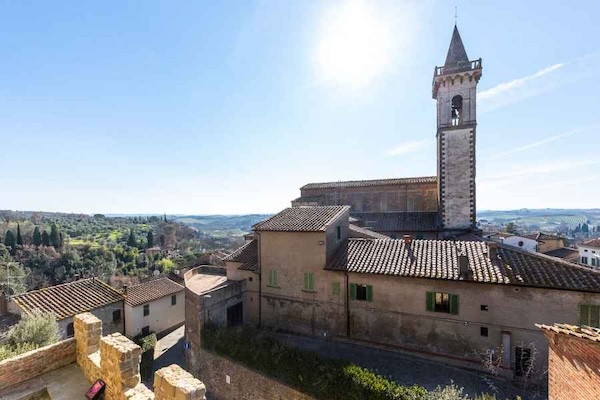 Castello dei Conti Guidi in Vinci, Tuscany
Castello dei Conti Guidi in Vinci, TuscanyThe medieval Castello dei Conti Guidi itself deserves special attention as one of the most significant things to see in Vinci. Built in the 11th century, this fortress has watched over the valley for nearly a thousand years and now serves as both a museum and a symbol of the town's rich history.
Climb to the top of the tower for spectacular 360-degree views that stretch from the Apennine Mountains to the Mediterranean coast on clear days. The castle's thick stone walls, narrow windows, and ancient courtyards transport you back to medieval times, while informative displays throughout the building tell the story of the region's feudal past and Leonardo's connection to this remarkable place.
Vinci in Tuscany Italy
Just a short walk from the town center, you'll discover the Chiesa di Santa Croce, the parish church where Leonardo da Vinci was baptized in 1452. This simple yet beautiful Romanesque church holds profound significance for art lovers and history enthusiasts alike.
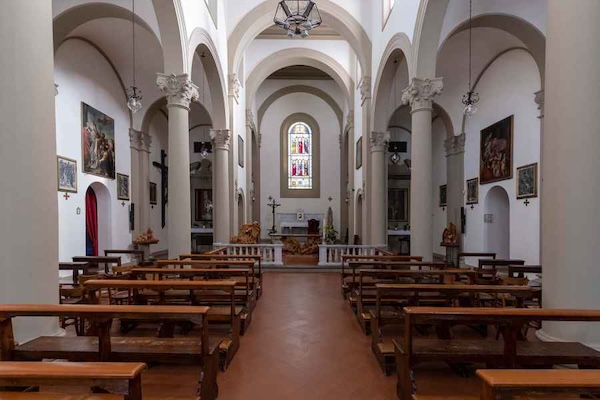 Chiesa Santa Croce in Vinci
Chiesa Santa Croce in VinciInside, you'll find a baptismal font that may very well be the same one used for Leonardo's baptism, creating a tangible connection to the Renaissance master. The church's peaceful interior, with its ancient frescoes and wooden crucifix, provides a moment of quiet reflection on the humble beginnings of one of history's most celebrated figures.
The heart of Vinci beats strongest in its charming historic center, where narrow cobblestone streets wind between medieval buildings and hidden courtyards. Take your time wandering through these atmospheric lanes, where every corner reveals architectural details from different centuries – Gothic arches, Renaissance doorways, and Baroque facades creating a fascinating timeline of Italian history.
The Piazza Leonardo da Vinci serves as the town's main square, surrounded by cafes and shops where locals gather for their daily conversations. Here, you'll find a modern statue of Leonardo as a young man, gazing thoughtfully toward his birthplace in the nearby hamlet of Anchiano.
Speaking of Anchiano, no visit to Vinci would be complete without making the pilgrimage to Leonardo's actual birthplace, located about 3 kilometers from the town center. This beautifully restored farmhouse, now known as Casa Natale di Leonardo, sits amid olive groves and vineyards in a setting that has changed little since the 15th century.
The house features period furnishings and exhibits that help visitors imagine Leonardo's early childhood in this rural setting. The surrounding landscape, with its gentle hills and agricultural terraces, likely influenced the young Leonardo's lifelong fascination with nature and his detailed observations of the natural world that would later inform his scientific studies.
Vinci in Tuscany Italy
For those interested in what to do in Vinci beyond the Leonardo-themed attractions, the town offers excellent hiking and walking opportunities through the Montalbano hills.
The area features well-marked trails that take you through ancient olive groves, past medieval churches, and up to scenic viewpoints overlooking the Arno Valley.
One popular route is the "Strada Verde," a gentle path that connects Vinci to nearby villages while showcasing the region's natural beauty and agricultural heritage.
These walks provide the perfect opportunity to experience the peaceful rhythm of Tuscan country life and perhaps spot some of the local wildlife, including wild boar, deer, and numerous bird species.
Wine enthusiasts will be delighted to discover that Vinci sits in the heart of the Chianti Montalbano wine region, known for producing excellent Chianti wines and the local specialty, Bianco dell'Empolese.
Several family-owned wineries in the area offer tours and tastings, where you can sample wines made from grapes grown in the same soil that nourished Leonardo's imagination. Many of these wineries have been operating for generations, maintaining traditional winemaking methods while incorporating modern techniques to create wines that truly express the terroir of this special place.
Don't miss the opportunity to visit during harvest season (September-October) when the vineyards come alive with activity.
The Biblioteca Leonardiana represents another fascinating attraction for visitors interested in diving deeper into Leonardo's legacy. This specialized library houses one of the world's most comprehensive collections of materials related to Leonardo da Vinci, including rare books, manuscripts, and scholarly research from around the globe.
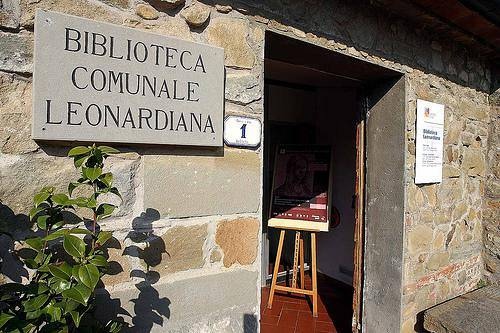
While primarily a research facility, the library regularly hosts exhibitions and cultural events that are open to the public. The building itself, a beautifully restored Renaissance palace, provides an elegant setting for exploring the ongoing scholarly work dedicated to understanding Leonardo's contributions to art, science, and human knowledge.
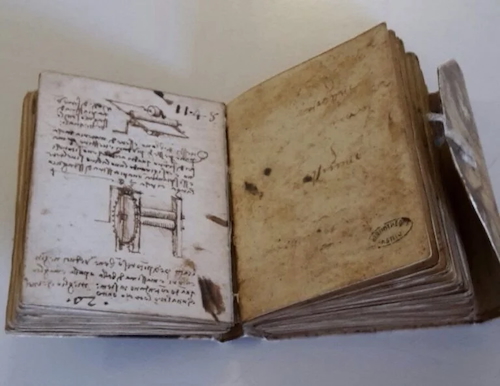 Book in the Biblioteca
Book in the BibliotecaVinci in Tuscany Italy
Art lovers should also visit the nearby Museo di Arte Sacra, located in the former Convent of Santa Maria delle Grazie. This small but impressive museum showcases religious art from the medieval and Renaissance periods, including works by artists who were contemporaries of Leonardo.
The collection provides valuable context for understanding the artistic environment in which Leonardo developed his skills and offers insights into the religious and cultural influences that shaped Renaissance art in Tuscany. The museum's peaceful setting in the former convent adds to the contemplative atmosphere perfect for appreciating these sacred works.
Vinci E-bike tour in Leonardo's Chianti
Discover the wonders of Chianti by e-bike with a tour from our trusted partner Viator, from Montalbano to Leonardo's birthplace.
Explore vineyards and taste fine wines on an unforgettable adventure! Take part in an unforgettable e-bike experience dedicated to fans of the fine Chianti wine, the undisputed emblem of Tuscan wine excellence. This trip is designed for Food-Wine Lovers and lovers of art, history and culture. At the end of this wonderful adventure, tastings of typical food and wine paired with the renowned Chianti wines of Tuscany await you, completing the experience in a delicious and unforgettable way.
This is a shared tour, with the group limited to a maximum of 2/3 bookings to ensure everyone's comfort.
Read more about - Vinci E-bike tour in Leonardo's Chianti
When it comes to dining in Vinci, you'll find a delightful selection of restaurants that celebrate both local Tuscan traditions and Leonardo's legacy. Ristorante Il Convivio, located in the historic center, offers refined Tuscan cuisine in an elegant setting with dishes inspired by recipes from Leonardo's time.
For a more casual experience, try Osteria del Borgo, where you can enjoy hearty local specialties like ribollita (Tuscan bread soup), bistecca alla fiorentina (Florentine steak), and fresh pasta made daily. But be sure to book in advance!
Many restaurants in Vinci pride themselves on using ingredients sourced from local farms and producers, ensuring that every meal reflects the authentic flavors of the region.
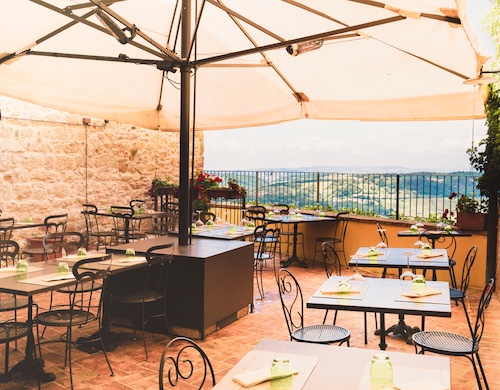 The Osteria del Borgo
The Osteria del BorgoCoffee culture thrives in Vinci, with several charming cafes perfect for experiencing the Italian ritual of the morning espresso or afternoon aperitivo. Bar Leonardo, conveniently located in the main square, serves excellent coffee alongside fresh pastries and light meals, making it a popular gathering spot for both locals and visitors.
The outdoor seating area provides the perfect vantage point for people-watching and soaking in the relaxed atmosphere of small-town Italian life.
For a more intimate coffee experience, seek out Caffè del Castello, a tiny establishment tucked away in a medieval alley where the barista knows every regular customer by name and their preferred coffee order.
 Caffe del Castello
Caffe del CastelloVinci in Tuscany Italy
Evening entertainment in Vinci centers around the traditional Italian passeggiata (evening stroll) and aperitivo culture. Join locals as they emerge from their homes around 6 PM for the daily ritual of walking through the town center, greeting neighbors, and catching up on the day's events.
Several wine bars and enotecas offer aperitivo service, where you can sample local wines accompanied by small plates of cheese, olives, and cured meats.
Bar Centrale, with its cozy interior and extensive wine selection, provides the perfect setting for unwinding after a day of sightseeing while mingling with friendly locals who are always eager to share stories about their beloved hometown.
Vinci in Tuscany Italy
Top Tip: visit the town's weekly market on Saturday mornings in Piazza della Libertà, where farmers from the surrounding countryside sell fresh produce, local cheeses, and handmade crafts.
This authentic market experience offers the chance to taste seasonal specialties and interact with the people who maintain Vinci's agricultural traditions. The market also features vendors selling everything from vintage clothing to handcrafted leather goods, making it an excellent place to find unique souvenirs that reflect the area's artisanal heritage.
Arrive early (around 8 AM) for the best selection and to experience the market at its most vibrant.
A local secret is the small trail that leads from behind the castle to a hidden viewpoint known only to residents as "Il Belvedere Segreto" (The Secret Viewpoint). This short 10-minute walk through olive groves rewards you with perhaps the most stunning panoramic view in the entire area, encompassing the Arno Valley, Florence in the distance, and the Apennine Mountains on the horizon.
The spot is particularly magical at sunset when the golden light bathes the Tuscan landscape in warm hues. Local photographers consider this their secret weapon for capturing the perfect shot of the region's natural beauty.
For those visiting during the summer months, don't miss the outdoor cinema screenings held in the castle courtyard during July and August.
This beloved local tradition features a mix of Italian classics and contemporary films, with many screenings dedicated to movies about Leonardo da Vinci or set in Renaissance Italy. Locals bring blankets and picnic baskets, creating a wonderfully communal atmosphere under the stars.
The cinema series is rarely advertised to tourists, so ask at your hotel or the tourist information office for the current schedule – it's an experience that perfectly captures the relaxed, community-oriented spirit of small-town Italian life.
The surrounding Montalbano Natural Park offers excellent opportunities for outdoor activities beyond simple hiking. Mountain biking enthusiasts will find well-maintained trails that range from gentle family-friendly routes to challenging climbs for experienced riders.
The park's diverse ecosystem includes Mediterranean scrubland, oak forests, and cultivated terraces that have been shaped by centuries of human activity. Birdwatchers can spot numerous species, including buzzards, kestrels, and various songbirds, while the lucky observer might catch a glimpse of wild boar or roe deer in the early morning or evening hours.
Seasonal festivals and events add extra charm to any visit to Vinci in Tuscany Italy. The Festa di Leonardo, held annually in April around Leonardo's birthday, transforms the entire town into a Renaissance celebration with period costumes, historical reenactments, and demonstrations of Leonardo's inventions.
During the autumn harvest season, many local wineries open their doors for special events combining wine tastings with traditional music and dancing.
The Christmas market in December fills the historic center with twinkling lights, local crafts, and the aroma of roasted chestnuts, creating a magical atmosphere that rivals any European Christmas market.
Vinci in Tuscany Italy
Shopping in Vinci offers unique opportunities to take home authentic pieces of Tuscan culture. The town's artisan workshops produce beautiful handcrafted items including leather goods, ceramics, and textiles using traditional techniques passed down through generations.
Bottega Leonardo specializes in reproductions of Leonardo's inventions and artwork, offering everything from detailed model kits to high-quality prints of his most famous drawings. For food lovers, local shops sell regional specialties like extra virgin olive oil, aged balsamic vinegar, and artisanal pasta that make perfect gifts or souvenirs to recreate the flavors of Tuscany at home.
The nearby thermal springs of Monsummano Terme, just 20 minutes away by car, provide a perfect complement to your Vinci experience. These natural hot springs have been used for therapeutic purposes since Roman times and offer modern spa facilities where you can relax and rejuvenate after days of sightseeing.
Many visitors combine their cultural exploration of Vinci with wellness treatments at these historic thermal baths, creating a perfect balance of mind and body restoration. The springs are particularly popular during the cooler months when the warm mineral waters provide a welcome contrast to the crisp Tuscan air.
Photography enthusiasts will find endless inspiration in Vinci's medieval architecture and surrounding landscapes. The golden hour just after sunrise and before sunset provides the most dramatic lighting for capturing the town's stone buildings and terracotta roofs.
Local photographers recommend visiting the olive groves during the harvest season in October when the silver-green leaves create beautiful patterns in the morning light. The narrow streets and ancient doorways of the historic center offer countless opportunities for architectural photography, while the panoramic views from various viewpoints around town provide stunning landscape shots that capture the essence of Tuscany.
For families traveling with children, Vinci offers several engaging activities that make learning about Leonardo da Vinci fun and interactive. The museum features hands-on exhibits where kids can try operating models of Leonardo's machines, and special family workshops are often available during school holidays.
The park areas around the castle provide safe spaces for children to play while parents enjoy the views, and the gentle hiking trails in the surrounding countryside are suitable for young walkers. Many restaurants offer children's menus featuring simple Italian favorites like pasta with tomato sauce and pizza margherita.
Getting around Vinci is best done on foot, as the historic center is compact and most attractions are within easy walking distance of each other. However, to reach Leonardo's birthplace in Anchiano or explore the wider Montalbano area, having a car provides the greatest flexibility.
Local taxi services are available for those without vehicles, and some hotels offer shuttle services to major attractions. During peak tourist season, parking in the historic center can be challenging, so consider using the designated parking areas outside the medieval walls and enjoying the short walk into town.
Accommodation options in Vinci range from charming bed and breakfasts in converted medieval buildings to luxury agriturismos (farm stays) in the surrounding countryside. Many visitors choose to stay in restored farmhouses that offer cooking classes, wine tastings, and the opportunity to participate in seasonal agricultural activities like olive harvesting.
These accommodations provide an immersive experience in Tuscan rural life while maintaining easy access to Vinci's cultural attractions. Booking in advance is essential, especially during peak season (April-October) and during special events like the Leonardo festival.
As your visit to Vinci draws to a close, take a moment to sit quietly in the main square and reflect on the remarkable legacy of this small Tuscan town. Here, in these same streets and among these same hills, one of history's greatest minds took his first steps and began to see the world with the curiosity and wonder that would later change human understanding forever.
Whether you came for the art, the history, the wine, or simply the peaceful beauty of rural Tuscany, Vinci offers something that larger, more famous destinations often cannot: an intimate connection to the past and a genuine taste of authentic Italian life.



